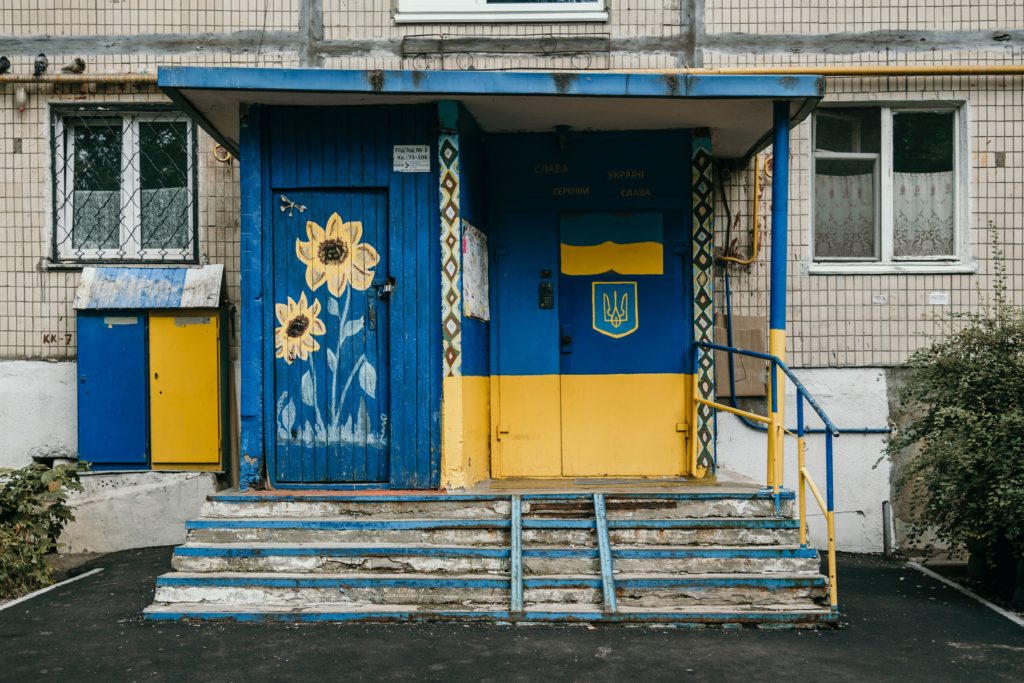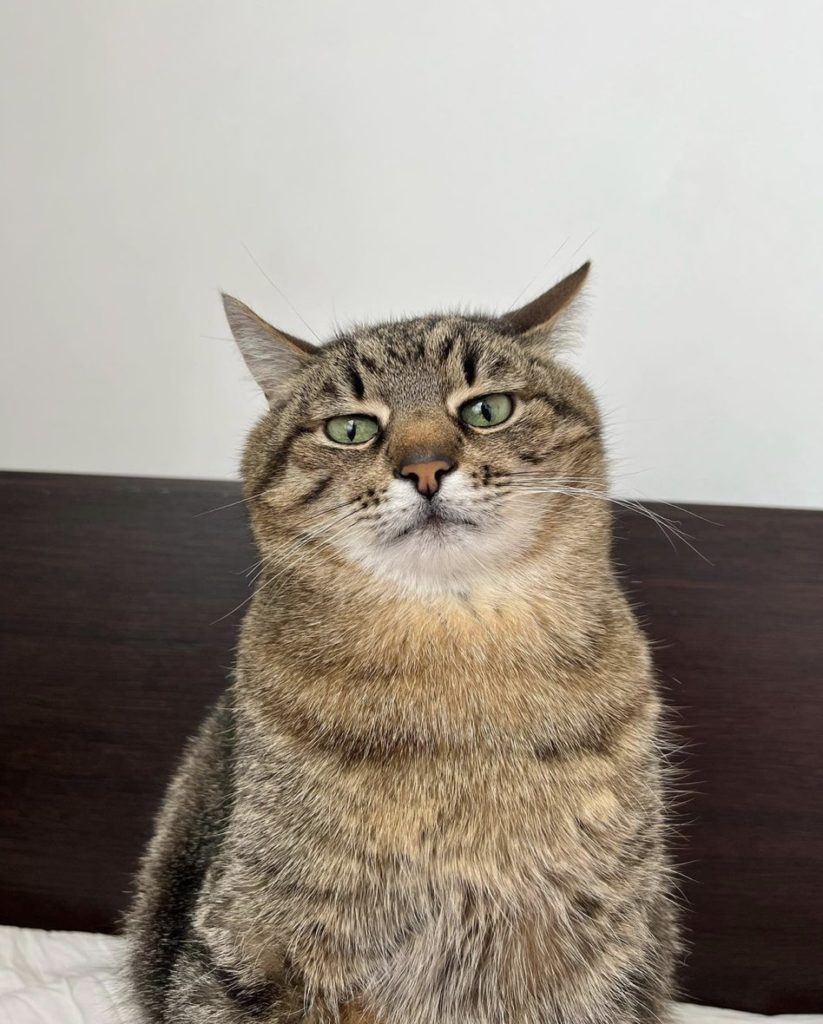An emerging trend in International Relations literature conceives of peace as acts of empathy and care, or a ‘social work’ of peace.[i] Viewing peace in this way is strikingly different from more traditional understandings, where peace is visualised more negatively as the absence of conflict.[ii] As scholars like Frank Möller have stressed, peace and conflict are not always mutually incompatible: ‘pockets of peace’ can occur alongside and within conflict. Peace can be found in moments within the everyday; and these moments can accumulate (especially if we recognise them as ‘pockets of peace’), helping us to visualised and build more widespread, sustainable peace.

My research has developed as an attempt to realise the call to action found in many of these research papers. I began working on the Visualising Peace project in January 2022. On 24 February, Russia invaded Ukraine, starting the first international land war in Europe since World War II. This in turn triggered a large movement of forced migrants across Ukraine and Europe. At the time of writing, 10 million people have fled their homes, 3.6 million of whom have left Ukraine.[iii] Thousands have died in the conflict, and thousands more have been injured, both physically and psychologically.
Visualising Peace on Twitter
I have named my project ‘Pockets of Peace in Ukraine, Spring 2022’ in order to reflect its purpose: to identify moments and individual acts of care and empathy within an overarching conflict. To identify these moments, I turned to Twitter. Twitter has become a space for sharing real-time events and experiences during the war in Ukraine.[iv] I traced trends among Twitter users, focusing on what subjects the tweets highlight. Devastation and death dominate the platform’s #Ukraine and #Kyiv trends, yet acts of care and empathy have also emerged.

Most of the trends I noticed were about military action and technology, such as the ‘Ghost of Kyiv’ rumours; but subtler trends also emerged. I became interested in the tensions between typical ways of viewing and acting within war (e.g., male soldiers fighting, images of tanks) and what else I was seeing on Twitter. In some ways, the idea of ‘everyday peace’ is linked to mundanity, where typically overlooked actions are actually critical to building and sustaining peace. (This principle underpins the ‘Everyday Peace Indicators’ project.) For example, watch this video of Ukrainian soldiers playing music in Kyiv. While they’re dressed in fatigues and clearly preparing for conflict, in some ways it is just a community gathered in the square to watch street performers—something that used to be a mundane act in Ukraine. Similarly, Instagram pages for pets are relatively common now, and this cat’s viral social media helped raise over $10,000 in the first month of the war.
Inspired by my general research into the tensions of visualising peace and conflict on social media, I identified three trends which I was particularly interested in analysing: care of animals, care for nature, and care through music, which you can explore elsewhere in the museum. This project is a dynamic one, and as the conflict continues to evolve, the trends shift. Recently, events in Ukraine have become less prominent on Twitter, presumably as the novelty and shock in the West wears off. Yet the number of people affected by the war—from the internally displaced and refugees trying to make homes in new countries, to those on the front-line or having to bury loved ones—is ever-increasing. I believe it is important, especially from positions of privilege such as those of us creating this project in the UK, to bear witness to such tragedy. By documenting trends on Twitter, I hope to have highlighted just a small bit of the humanity within the war, to remind all of us of the humans that are impacted.
When acts of care are viewed as acts of peace and peacebuilding, they are also acts of resistance to oppressive power and violence. So, the aim of this project is also to preserve how Ukrainians resisted their occupiers outside of the military front. Ultimately, I hope this project inspires reflection on how you understood, and continue to understand, what occurred when Russia invaded Ukraine, and use this reflection to reimagine how to visualise peace in your own life as well as in live conflict zones.
What do you think?
- What contact have you had with the war in Ukraine?
- How have you used social media to keep up to date on developments in the war? What trends have you noticed and how might they have affected how you visualise the conflict and people’s responses to it?
- How do you experience conflict and social justice issues through social media in general?
- How does the concept of peace as everyday acts of care and empathy shift your understanding of conflict, social justice and peace-making?
- Can you think of everyday acts of peace or peace-making that have made a difference in your own life?
If you enjoyed this item in our museum…
You might also like ‘Green Mosul‘, ‘Care for Animals‘, ‘Care for Nature‘, ‘Care through Music‘ and items in the museum with the tag ‘Everyday Peace‘.
Grace Bitner (May 2022)
[i] Lipschutz 1998. See also: Krystalli, Roxani and Philipp Schulz. “Taking love and care seriously: An emergent research agenda for remaking worlds in the wake of violence.” International Studies Review 24, no. 1 (2022); Berents 2015; Kappler and Lemay-Hebert 2019; Porter 2016; Selimovic 2013; Väyrynen 2019; and Vaittinen et al. 2019.
[ii] Pitanguy 2011.
[iii] These statistics have been published by the UN, on the basis of research carried out by the International Organisation for Migration (IOM) between 9 and 16 March. As this BBC article notes, the actual figures are likely to be even higher.
[iv] As Donatella della Ratta’s book Shooting a Revolution and Omar Mohammed’s Mosul Eye blog both testify, this is not the first conflict which has been ‘lived-tweeted’ on social media. This podcast reflects on the long lead-up to Russia’s invasion of Ukraine in February 2022: https://www.buzzsprout.com/1717787/10586724. Among other topics, it discusses the role played by social media in shaping how people have visualised the conflict, and also how people on the ground and far away have engaged with in and offered support.